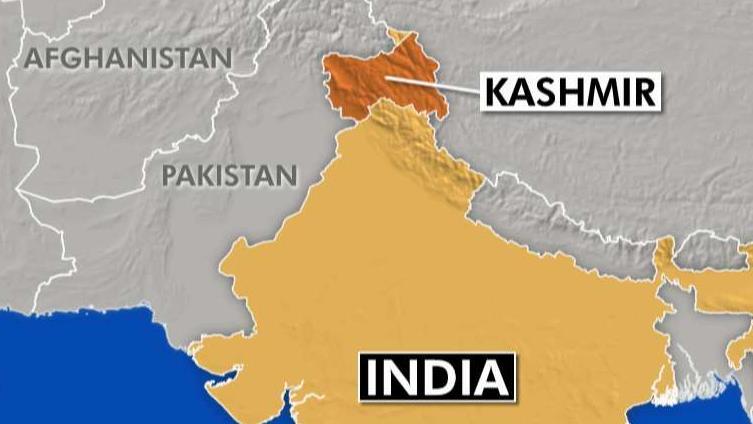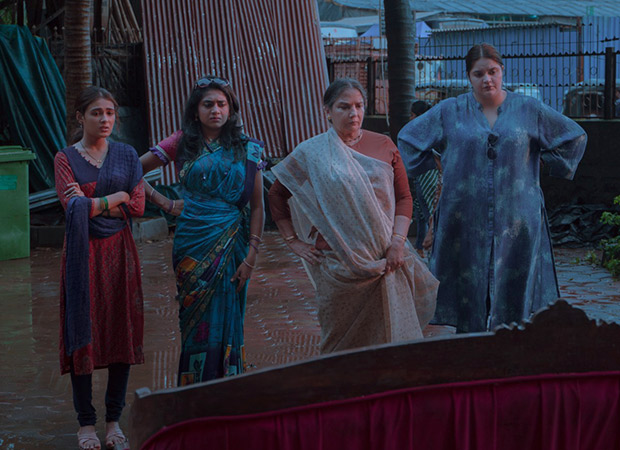India Vs. Pakistan: Kashmir As The Core Of The Conflict And The Possibility Of Renewed Warfare

Table of Contents
The Historical Roots of the Kashmir Conflict
The seeds of the Kashmir conflict were sown during the tumultuous partition of British India in 1947. The hastily drawn borders failed to account for the complex ethnic and religious demographics of the region, leaving Kashmir, a predominantly Muslim-majority state with a Hindu Maharaja, in a precarious position. Maharaja Hari Singh initially opted for independence, but following a tribal invasion supported by Pakistan in October 1947, he acceded to India in exchange for military assistance. This accession, however, was immediately challenged by Pakistan, leading to the First Kashmir War (1947-1949).
This initial conflict resulted in a ceasefire line, later formalized as the Line of Control (LOC), dividing Kashmir between Indian-administered Jammu and Kashmir and Pakistan-administered Azad Kashmir and Gilgit-Baltistan. The Second Kashmir War (1965) further solidified this division, and subsequent conflicts, including the Kargil War (1999), have only intensified the dispute. The Simla Agreement of 1972, while aiming to ease tensions, did little to resolve the underlying territorial claims.
- Key dates and events: 1947 Partition, October 1947 Tribal Invasion, 1949 Ceasefire, 1965 War, 1971 War, 1999 Kargil War.
- Major players: Maharaja Hari Singh, Jawaharlal Nehru, Muhammad Ali Jinnah, subsequent Indian and Pakistani leaders.
- International involvement: UN mediation attempts, involvement of various global powers.
- Impact on civilian populations: Displacement, human rights violations, loss of life.
The Core Issues Fueling the Conflict
The India vs. Pakistan conflict over Kashmir centers around several deeply entrenched issues. The primary dispute revolves around the territory itself, with both countries claiming the entirety of Kashmir based on differing interpretations of the accession process and historical legitimacy. India asserts its claim based on the Maharaja's accession, while Pakistan argues for a plebiscite to determine the Kashmiri people's will.
The issue of self-determination for the Kashmiri people is paramount. Different Kashmiri groups hold varying perspectives, ranging from complete independence to integration with either India or Pakistan. Furthermore, religious and ideological factors play a significant role, with the conflict often framed as a struggle between Hindu India and Muslim Pakistan, fueling nationalist sentiments on both sides.
Cross-border terrorism and insurgency further complicate the situation. Militant groups operating from across the LOC have contributed to decades of violence and instability in the region, adding another layer to the already complex conflict.
- Specific territorial claims: India claims the entire state of Jammu and Kashmir, while Pakistan claims Azad Kashmir and Gilgit-Baltistan.
- Different perspectives on self-determination: Independence movements, pro-India groups, pro-Pakistan groups.
- Impact of religious extremism: Role of religious narratives in shaping public opinion and fueling violence.
- The role of militant groups: Activities of various militant organizations operating in the region.
Escalation of Tensions and the Risk of Renewed Warfare
Recent years have witnessed a concerning escalation of tensions along the LOC, with regular border skirmishes and military incidents. The presence of nuclear weapons in both India and Pakistan significantly raises the stakes, creating the potential for catastrophic consequences should a major conflict erupt. A miscalculation or accidental escalation could have devastating global repercussions.
Geopolitical factors and regional alliances also play a role. The involvement of global powers, their strategic interests, and shifting alliances can influence the dynamics of the conflict, potentially escalating or de-escalating tensions.
- Specific examples of recent border incidents: Specific dates and details of recent clashes.
- Analysis of nuclear capabilities and doctrine: Assessment of each country's nuclear arsenal and potential use.
- The influence of global powers: Roles played by the US, China, Russia, etc.
- Scenarios for potential escalation: Potential triggers and consequences of an escalation.
Potential Pathways to Peace and Conflict Resolution
Despite the bleak outlook, pathways towards peaceful resolution exist. Diplomatic solutions and negotiations, involving direct dialogue between India and Pakistan, remain crucial. International mediation and third-party involvement, potentially facilitated by the UN or other global actors, could play a vital role in fostering dialogue and building trust.
Confidence-building measures, such as reducing military deployments along the LOC, implementing ceasefire agreements, and establishing communication channels, are essential steps towards de-escalation. Arms control agreements, limiting the production and deployment of weapons, could also contribute to reducing the risk of conflict.
However, significant challenges and obstacles remain. Deep-seated mistrust, historical grievances, and conflicting narratives create formidable hurdles to overcome.
- Successful examples of conflict resolution in other regions: Lessons learned from similar conflicts.
- Possible areas of compromise: Potential areas for agreement and negotiation.
- The role of civil society and public opinion: Influence of public discourse and civil society movements.
- Long-term strategies for achieving sustainable peace: Long-term strategies for peacebuilding and conflict management.
Conclusion: Understanding the India vs. Pakistan Conflict over Kashmir and the Path Forward
The "India vs. Pakistan: Kashmir" conflict is a deeply complex and multifaceted issue with a long and troubled history. The core issues of territorial claims, self-determination, religious factors, and cross-border terrorism continue to fuel tensions, creating a dangerous environment with the very real threat of renewed warfare. Understanding these complexities is crucial to fostering a path towards peace.
The urgent need for peaceful resolution and effective conflict management cannot be overstated. The potential for catastrophic consequences necessitates a commitment to dialogue, negotiation, and international cooperation. We must all work towards finding a lasting solution that addresses the concerns of all parties involved. Learn more about this critical conflict, engage in informed discussions, and advocate for peaceful solutions to prevent renewed warfare related to India vs. Pakistan: Kashmir. Share this article to raise awareness and promote a peaceful resolution.

Featured Posts
-
 Isabt Barbwza Alkhtyrt Fqdan Alasnan Khlal Merkt Marakana
May 08, 2025
Isabt Barbwza Alkhtyrt Fqdan Alasnan Khlal Merkt Marakana
May 08, 2025 -
 Dystopian Horror Movie Adaptation First Trailer Drops
May 08, 2025
Dystopian Horror Movie Adaptation First Trailer Drops
May 08, 2025 -
 Nc State Loses Kendrick Raphael Rising Junior Running Back Decommits
May 08, 2025
Nc State Loses Kendrick Raphael Rising Junior Running Back Decommits
May 08, 2025 -
 Important Dwp Notice 12 Benefits May Require Bank Account Verification
May 08, 2025
Important Dwp Notice 12 Benefits May Require Bank Account Verification
May 08, 2025 -
 First Look The Long Walk Trailer Reveals A Gripping Dystopian World
May 08, 2025
First Look The Long Walk Trailer Reveals A Gripping Dystopian World
May 08, 2025
